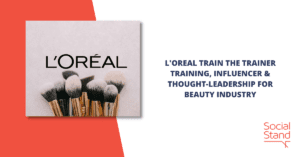Launch Your Pop-Up Store Virtually Through Facebook And Instagram Shops.
I like to keep an eye out for pop-up stores – or short-term retail spaces – when visiting shopping malls. These stores showcase the latest trends and inject a breath of fresh air into malls. By and large, they have fairly static offerings. Pop-up stores allow emerging brands to test the market with far fewer costs. This is compared to investing in a traditional brick-and-mortar storefront. Established brands can also benefit from seeing if their products resonate with the mall’s foot traffic.
This period of the pandemic has dealt a severe blow to my clients in the retail sector. I recommend that they continue to increase brand exposure by setting up pop-up stores online. These include social media platforms like Facebook and Instagram.Proactively Expand Your Online Presence Even If You Already Have An Online Store.
Many of my clients already operate online stores. They are even listed on popular e-commerce platforms such as HKTV Mall. Some were not initially convinced of my proposed approach. In response, I use the analogy of opening a store in a shopping mall. Brands may have their flagship stores (whether online or offline). They also have branches in other shopping malls (even in HKTV Mall). If other shopping malls offered a retail space to launch a pop-up store at no cost, you would most likely give it some serious thought. Launching a Facebook and Instagram Shop encapsulates the concept of setting up a pop-up store.
Make use of the feature to tag products in Facebook and Instagram posts to increase traffic to your online site.
Most retailers – if not all – already manage Facebook and Instagram pages. More often than not, they provide the URL to their online shop when promoting their products through social media posts. Some may be apprehensive about setting up Facebook and Instagram Shops. It’s a fairly straightforward process. Perhaps the most challenging task is cropping existing product photos to fit Instagram’s square image format.
Others may find it tedious to copy and paste the product catalog onto a new platform. But I believe that this is outweighed by the benefits of the unique feature that allows you to tag products in Facebook and Instagram posts. This provides more avenues to engage prospective customers who then click to browse the product details on items that pique their interest.
Feature a curated selection of your product range.
It’s to be expected that it takes considerable effort to maintain a Facebook or Instagram Shop. There are products to list and remove from the online catalog. Update items to indicate as out of stock when they run out, prices to change, and so on. This does not pose too much of an issue if the retailer has a small number of products that do not need frequent updating. If there are more than a hundred (or a thousand!) goods, I suggest selecting, listing, and focus promoting ten, or twenty, items at best.
Running Facebook and Instagram Shops requires far less manpower than a brick-and-mortar store. Retailers can easily sync their store and product information to their Facebook and Instagram Shops. Any updates on their online store are automatically reflected on their Facebook and Instagram Shops as well. One of the widely available and powerful tools to perform such synchronization is Facebook for WooCommerce for retailers using both platforms.
Suitable for both established brands and aspiring enterprises.
Some smaller merchants do not operate online shops as they are hesitant when it comes to managing and accepting payments online. I encourage you to set these reservations aside. Take the first step to launch an online shop nonetheless. Try using Facebook Commerce Manager. Facebook and Instagram Shops do not stipulate that payments must be made and accepted on their platforms. Take advantage of these online stores to showcase and draw prospective customers to your product offering.
Customers can drop a message or call if they wish to purchase a product. If you think that you might be inundated with such calls daily, it is worthwhile investing and connecting a payment system. It also ensures the timely sales and delivery of your goods before embarking on product promotions. Smaller retailers, focus first and foremost on making that connection with your customers through your products on Facebook and Instagram!
Reference: https://www.mpfinance.com/fin/dailyb2.php?col=1592303366123&node=1596186537968&issue=20200803
#trend up sales #bernie store #digital marketing for shopping malls








